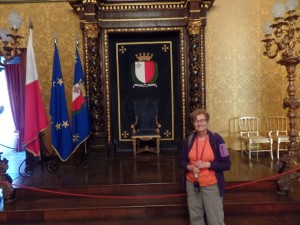![20181103_120002[28693]](http://susancalder.com/wp-content/uploads/2019/07/20181103_12000228693-e1563568807389-225x300.jpg)
All posts by admin
Holiday Reading

Today, on the Books We Love Insider Blog I write about a novel I read that enhanced my recent holiday to Malta.
Smashwords Summer Sale
![61885446_2405017862876654_632504315965079552_n[2]](http://susancalder.com/wp-content/uploads/2019/07/61885446_2405017862876654_632504315965079552_n2-225x300.jpg)
and To Catch a Fox
Using Your Hobbies and Interests in Stories
Summer is officially here. For my June commitment on the BWL Author Insider Blog I wrote about one of my favourite activities, hiking, and how I made use of it my three novels.
*
Ten years ago, when my husband Will retired, we joined a hiking club. In a recent radio interview, I talked about the enjoyment we both get from heading out to the Rocky Mountains, a couple of hours drive from our city of Calgary.
“When I’m out there, all my cares vanish,” I said. “We carpool, too, and socialize with an interesting group of people.”
The broadcaster commented that mystery writers might imagine insidious actions that could happen on a hike. He asked if I’d ever included this in a novel. All I could think of was one scene in my first book. Afterwards, I realized that hiking appears in all three of my novels.
 |
| Overlooking Arnica Lake, Banff National Park |
In Deadly Fall, book one of my murder mystery series featuring insurance adjuster sleuth Paula Savard, Paula hikes the Mount Indefatigable Trail in nearby Kananaskis with three suspects in the case she’s investigating for personal reasons; the death of her childhood friend. As Paula reaches the trail lookout, she starts to think that the two men on the hike are plotting something sinister. During a moment of panic and paranoia, she fears one of them will push her off the cliff.
Will and I hiked this trail before we joined the club and bought proper hiking gear. I found it a treacherous climb to an awesome view of the turquoise Kananaskis Lakes. I’d like to try the trail again with good boots and poles, but it has been closed for fourteen years due to grizzly bear activity.
 |
| Mount Indefatigable south peak |
Ten Days in Summer, the Paula Savard sequel, doesn’t include a hike. But a suspect is an avid hiker and mountain camper. I felt this interest showed seventy-year-old Florence’s physical fitness and spunk. Florence is camping in the back country when a fire damages the building she lives in and kills the owner, who occupied the ground floor apartment. When the fire is deemed suspicious, she refuses to provide the name of her hiking companion, even though he could give her an alibi. Florence is, by nature, defensive and doesn’t let anyone push her around. She’s also more daring than I am, since I’d worry about bears if I tented in a mountain wilderness.
 |
| Not much protection in these little tents |
Hiking plays the largest role in my third novel, To Catch a Fox. The book is partly set at a fictional self-help retreat in southern California. While personal growth and empowerment are the New Dawn Retreat’s primary goals, the body is also viewed as important. The retreat’s co-leader, Sebastiano, leads two hikes a day in the hills that enclose the valley location. Hiking struck me as the ideal physical activity for this spiritual place. Climbing trails is non-competitive, accessible to anyone who’s reasonably fit and requires little equipment.
 |
| Rummel Lake hike, Kananaskis |
It makes sense for writers to use interests and hobbies in their stories. Whether it’s chess, doll-collecting or hiking, this is the author’s passion and a subject he or she knows details about without the need for research. But I also want to create a wide range of characters and there are many Calgarians who give zero thought to hiking. So it might be time for a novel without one single reference to my favoured activity. My next novel in the Paula mystery series will take place in winter, when most Rocky Mountain trails are covered in snow and have avalanche warnings. Hiking will be far from any character’s mind.
Unless someone ventures on a mountain trail and the situation turns treacherous and suspicious.
Hiking Season
![41342899_1881674131911262_1692778011583053824_n[1]](http://susancalder.com/wp-content/uploads/2019/04/41342899_1881674131911262_1692778011583053824_n1-300x225.jpg)
My Library Story
Check out my library story featured on the Calgary Public Library website. It’s on the right hand side of the home page. You might need to scroll down.

In the interview, I talk about my book club, which meets monthly at Fish Creek Library. The club has become an important part of my life, since my move to Calgary in 1996.
A Tale of Two Writing Conferences
Here’s the post I wrote for my May blog on my publisher BWL’s website.
*
Every August I attend When Words Collide Festival for Readers and Writers here in my home city of Calgary. I don’t need to travel far. The weekend festival takes place at a hotel a fifteen walk from my home. In February, I travelled farther, to Lethbridge, a two-hour drive south of Calgary, to take part in Wordbridge, Lethbridge’s first writers’ conference.
Since the Lethbridge panels were only scheduled for Saturday, I initially planned to make it a day trip. But the conference also included keynote speakers at a snack and chat in the evening. To take full advantage of the event, I decided to stay overnight. My husband Will agreed to go with me and spend the day and evening walking outside if the weather was nice, reading, playing computer games and watching TV. We booked a motel room not far from the downtown venue using our credit card points.
| Me in Lethbridge, Sept 2015 – The coulee park in downtown Lethbridge is a cool place to walk |
The weekend turned out to be brutally cold. Will spent most of Saturday inside with his computer. At the conference, I sat on an editing panel and shared my experiences of working with editors. One of my tidbits of advice was to suggest that writers early in the process of a writing a book get a manuscript evaluation, which can provide insight into a story’s larger issues that will need to be solved before an expensive edit. The Writers’ Guild of Alberta offers this service to members for a reasonable price. I might take advantage of it for my next novel.
 |
| Panel on Working With an Editor |
Seventy-eight people attended the Lethbridge conference. We met together in a basement room in the local library for panels that took place on the hour. I enjoyed the intimate atmosphere. The organizers were so pleased with Wordbridge’s success that they have already scheduled a second conference for Feb 7-8, 2020, adding a day of pre-conference activities and another room for two tracks of panels.
 |
| Wordbridge attendees at a panel |
Wordbridge still has a long away to go to match the activity of Calgary’s When Words Collide, which anticipates 800 attendees this summer and 10 tracks of panels, presentations, blue pencil cafes, pitch sessions and more over a three day period. I expect to participate in a few panels and spend a lot of time in the Merchants’ Room helping with the BWL book sale table.
 |
|
Nancy Bell and Jude Pittman at 2017 When Words Collide |
But it’s not a competition between Lethbridge and Calgary. Wordbridge and When Words Collide complement each other. I’m sure this is why the Lethbridge organizers scheduled their conference for the dead of February, the opposite time of year of August’s When Words Collide. A writer friend suggested that we go to Wordbridge next year with a few other writers and make it a girls’ getaway weekend. That sounds like fun, especially if next February is a tad warmer than it was this year.
 |
| Downtown Lethbridge in winter |
A Taste of Local Authors

Looking forward to tonight’s reading with eight other authors at Owl’s Nest Bookstore. I plan to read from the scene in a fictional Owl’s Nest in my novel, To Catch a Fox. As an homage to both Owl’s Nest and my friend, Pamela McDowell, I call my bookstore Ospreys, after Pam’s acclaimed children’s book Ospreys in Danger.
Writing Conferences
![FullSizeRender[16408]](http://susancalder.com/wp-content/uploads/2019/04/FullSizeRender16408-211x300.jpg)
Launching a Novel
In case you missed it, here is my April 12th blog, which was posted on my publisher BWL’s website.
*
On March 26th I hosted a book launch for my new novel, To Catch a Fox. For the venue, I chose Owl’s Nest Books in Calgary because I’d held launches there for my two previous novels and I love this independent bookstore which is so supportive of local writers. You’d think launches would be old hat for me the third time around, but I always find something new to worry about. This time, in addition to reading and answering questions, I tried out a power point presentation using a system borrowed from a friend. At the last minute, I decided to rent a microphone and am glad I did. It was easier to use than I’d expected. Close to 85 people attended the launch and those at the back would have had a hard time hearing my voice, especially after it was strained from 40 minutes of talking.
 |
| My friend advised me to make my book cover the first slide, for people to watch during the introductions |
For my talk, I wanted an upbeat mood despite the novel’s dark material. So I chose a travel photo theme and showed pictures from my two holidays in Southern California to research potential settings for To Catch a Fox. I found I didn’t need notes, since each slide prompted me about what to say next. My idea was to give a sense of how I worked my own travels into the story and make the settings feel more real for readers when they later encountered them in the book.
| This woman conveniently photo-bombed my picture of the Santa Monica boardwalk. Julie, my protagonist, jogs along this same boardwalk. |
Initially, I planned to save my readings from the novel to the end of the presentation. Then I realized it would be more interesting for listeners to look at a picture where the scene takes place. So I paused part-way through my talk for my first reading. I was afraid this might break the flow, but it served as a transition between my first and second research holidays.
As a non-techy person, I had to make three trips to my friend’s house to get the presentation working properly. My friend’s favourite part of the program was the cheesy apartment that Will and I rented for our first California trip. Julie and Delilah stay in this same place. Another friend who has started reading To Catch a Fox told me she’d have thought I was exaggerating the racy décor if she hadn’t seen the slide show.
| The boudoir, where Julie slept. Delilah slept in the sofa bed in the cluttered living room. |
I started writing To Catch a Fox when I got home from the first trip. After two drafts, I felt confident of my Los Angeles area details, but wanted to get a better feel for the novel’s primary setting — a fantasy retreat. All I had was a vague sense that it was about a two hour drive east of Los Angeles. When my sister-in-law suggested we join her on a cruise from San Diego, Will and I tacked on a road trip to the California interior. Our explorations wound up locating my New Dawn Retreat farther south than I’d thought, in a sparsely populated orange growing belt. We began the drive with a stop at the California Citrus State Historic Park and bought a bag of oranges. They were delicious.
This landscape below is the closest I could get to my imagined retreat. The New Dawn Retreat in my story features a broad lawn enclosed by hills, with citrus and olive cultivation on the hillsides.
For my second reading, I chose a scene set at the New Dawn Retreat.
The presentation wrapped up with questions and door prizes, which included an Owl’s Nest gift card as my thanks to the bookstore, a recently published chapbook of one of my short stories and, most exciting of all, bottles of Dawn dish detergent.
What I find most fun about book launches is seeing people from different areas of my life gathered together in one place. Friends, family, my fellow hiking and book club members, writer acquaintances, readers who’ve enjoyed my previous novels. I don’t get a chance to talk to them all, but it’s wonderful to see their supportive faces in the audience and to touch base briefly with a few.
And now, what will I do for my next launch? First I’ll have to write the book.

